#nathab
Text
Eine kuratierte Auswahl an umweltfreundlichen Wildtiertouren, bei denen der Tierschutz ganz oben auf der Agenda steht
Wir sind gerade von einem unglaublichen Tauchausflug im Great Barrier Reef zurückgekehrt und haben aus erster Hand gesehen, wie wichtig es ist, umweltfreundliche Wildtiertouren zu wählen, um die Umweltauswirkungen unserer Reisen zu minimieren.
Wir haben immer behauptet, dass Touristen in der Lage sein sollten, gefährdete Orte zu besuchen, solange sie dies auf nachhaltige Weise tun. Natürlich ist kein Tourismus wirkungsfrei. Erst letzten Monat hat ein Wachmann eines Kreuzfahrtschiffes in Norwegen auf tragische Weise einen Eisbären erschossen.
Bei der Auswahl umweltfreundlicher Wildtiertouren ist es wichtig, Entscheidungen auf der Grundlage dessen zu treffen, was für die Tiere am besten ist. Touren sollten immer Abstand zu Wildtieren halten und die Interaktion auf ein Minimum beschränken. Es ist äußerst wichtig, dass ethische Richtlinien eingehalten werden.
Die einzige Möglichkeit, dies wirklich zu gewährleisten, besteht darin, akkreditierte Betreiber einzusetzen, die wirklich durch die Sorge um die Umwelt und den Tierschutz motiviert sind. Manchmal kann dies bedeuten, dass Sie mehr bezahlen.
Wir haben eine Handvoll umweltfreundlicher Wildtiertouren aus der ganzen Welt ausgewählt, die die Möglichkeit bieten, eine Reihe von Wildtieren in verschiedenen Umgebungen zu sehen.
Kreuzfahrt mit kleinen Schiffen in Spitzbergen, Norwegen
Dauer: 4 TagePreis: $1.800Weitere Informationen: Magnetic North Travel
magnetischer Nordpol Vor der S/V Linden schwimmt ein Walross an Land
Die Philosophie von Magnetic North basiert auf der norwegischen Idee von „Friluftsliv“, was übersetzt „Leben in freier Luft“ bedeutet. Ihre Reisen – basierend auf einer tiefen Synthese zwischen Natur und Menschen – spiegeln genau das wider. Zur Feier des diesjährigen World Oceans Day hat Magnetic North seine bevorzugten umweltfreundlichen Meerestiertouren ausgewählt, darunter diese kleine Schiffskreuzfahrt nach Spitzbergen.
An Bord der S/V Linden, einem dreimastigen Holzschoner, erkunden Kunden Spitzbergens weite Fjorde, gletscherbedeckte Küsten, abgelegene Berge und einzigartige Wildtiere, darunter Eisbären (immer aus der Ferne), Walrosse und den Polarfuchs. Spitzbergen ist die größte Insel des Svalbard-Archipels und liegt tief innerhalb des Polarkreises.
Great Bear Rainforest, Kanada
Dauer: 5 TagePreis: $3.860 USDWeitere Informationen: Magnetic North Travel
magnetischer Nordpol Der Geisterbär kommt fast ausschließlich im Great Bear Rainforest vor
Der Kermodebär (auch Geisterbär genannt) ist weder Albino noch Eisbär, sondern eine weiße Variante des nordamerikanischen Schwarzbären. Sie kommt fast ausschließlich im Great Bear Rainforest in British Columbia in Kanada vor.
Die Spirit Bear Lodge ist ein gemeinschaftsbasiertes Ökotourismus-Unternehmen, das den Kitasoo/Xai'xais First Nations gehört und von ihnen betrieben wird, die das Gebiet seit Generationen bewohnen. Das in einem Archipel an der Westküste Kanadas gelegene Reiseziel ist ideal, um Wildtiere zu beobachten. Besucher können damit rechnen, Grizzlybären, Buckelwale, Wölfe, Pumas und natürlich den schwer fassbaren Geisterbären zu sehen.
Indien-Tiger-Quest
Dauer: 7 TagePreis: $6.795 USDWeitere Informationen: Natural Habitat Adventures
Traumzeit Ranthambore ist der beste Ort der Welt, um Tiger zu beobachten
Natural Habitat Adventures – oder NatHab – war das weltweit erste vollständig CO2-neutrale Reiseunternehmen und ist exklusiver Reisepartner des World Wildlife Fund. Daher wissen die Kunden, dass ihr Geld dazu beiträgt, die Zukunft gefährdeter Naturgebiete zu sichern und zu verändern.
Der beste Ort der Welt, um Tiger zu beobachten, ist Indiens wichtigstes Ziel für Tigersafaris im Ranthambore-Nationalpark im dichten Dschungel im Südosten von Rajasthan. Die Reiseroute von NatHab ist strategisch auf den Frühsommer in Indien abgestimmt, wenn die Besucher weniger und Tiger weniger schwer zu fassen sind.
In den wärmeren Monaten zieht es die Tiger auf der Suche nach Wasser ins Freie
Neben den prächtigen bengalischen Tigern ist es auch möglich, Wildtiere wie Lippenbären, Leoparden, Sambar, Chital, Langur-Affen, Pythons und mehr zu beobachten.
Galápagos Wander- und Kajakabenteuer
Dauer: 10 TagePreis: $6.495 USDWeitere Informationen: Natural Habitat Adventures
Traumzeit Meerechsen sind auf den Galápagos-Inseln endemisch
Wir haben die Galápagos-Inseln in Ecuador im Jahr 2014 besucht, als wir mit kleinem Budget gereist sind. Wir würden gerne eines Tages zurückkehren und die Inseln vom Boden und vom Meeresspiegel aus mit NatHab erkunden, die eine spezielle Paddelerlaubnis für den Galápagos-Nationalpark besitzen.
Die Basis für die Reise ist ein gecharterter Segelkatamaran, der sich über Nacht zwischen den Ankerplätzen bewegt, was bedeutet, dass die Kunden den ganzen Tag Zeit haben, um die verschiedenen Inseln zu erkunden. Jeder Tag bringt eine neue Insel mit Baltra, Isla Lobos, San Cristobal, Española, Floreana, Santa Cruz und Bartolome auf die Reiseroute.
Da die Galápagos-Inseln eine Fülle endemischer Arten wie Riesenschildkröten, Meeresleguane, Galápagos-Pinguine, Pelzrobben, Fregattvögel und Blaufußtölpel beherbergen, gibt es viel zu tun, um Naturliebhaber zu beschäftigen.
Wildnis von Borneo, Malaysia
Dauer: 12 TagePreis: $9.595 USDWeitere Informationen: Natural Habitat Adventures
Traumzeit Orang-Utans leben in den dichten Regenwäldern von Borneo
NatHabs beschreiben ihre Reise zur drittgrößten Insel der Welt (und der größten in Asien) als „Suche nach seltenen und bedrohten Wildtieren im ältesten Regenwald der Welt“. Eine weitere Untersuchung ihrer Reiseroute beweist, dass dies ziemlich genau ist.
Tief auf der Insel Borneo liegt der höchste und älteste Regenwald der Erde. Hier, geschützt unter dem dichten Blätterdach des Waldes, gedeiht das Leben in Form von gefährdeten Orang-Utans, Blattaffen, wilden Gibbons, fliegenden Lemuren, Leoparden und mehr als 300 lebhaften Vogelarten.
Antarktis, Südgeorgien und die Falklandinseln
Dauer: 24 Tage Preis: 23.990 USD Weitere Informationen: Lindblad Expeditions
Traumzeit Pinguine können zu Hunderttausenden gesehen werden
Als Partner des WWF und Natural Habitat Adventures arbeitet Lindblad Expeditions auch eng mit der National Geographic Society zusammen, um Kunden nachhaltige und umweltfreundliche Wildtiertouren in einige der entlegensten Gebiete der Erde anzubieten.
Eines der großartigsten dieser Erlebnisse ist die ultimative Südpolarmeer-Expedition in die Antarktis, nach Südgeorgien und zu den Falklandinseln. Vielleicht können sich nur die Ebenen der Serengeti mit den Tierschauspielen der wilden Antarktis messen.
Königs-, Kaiser- und Felsenpinguine sind zu Hunderttausenden zu sehen, zusammen mit Herden von See-Elefanten und dem größten Vogel der Welt, dem Albatros.
Ein Video-Chronist begleitet Expeditionen, um die Magie für Kunden einzufangen.
Schätze von Tansania Safari
Dauer: 8 TagePreis: $8.170 USDWeitere Informationen: AndBeyond
Traumzeit Ein baumkletternder Löwe in Manyara
Apropos Serengeti-Ebene, AndBeyond ist auf afrikanische umweltfreundliche Wildtiertouren spezialisiert. Ihr charakteristisches Erlebnis erkundet die Ufer des Lake Manyara, den Ngorongoro-Krater und natürlich die Serengeti. Die Unterbringung erfolgt in klassischen Safarizeltcamps.
Zu den Höhepunkten der Tierwelt gehören baumkletternde Löwen im Manyara-Nationalpark, wandernde Gnu- und Zebraherden in der Serengeti und flammend rosa Flamingos, die im Rift Valley fliegen. AndBeyond wurde 1991 gegründet und sein Firmenethos konzentriert sich auf die Aufrechterhaltung eines gesunden Gleichgewichts zwischen Land, Wildtieren und Menschen.
Kreuzfahrt zum Great Barrier Reef, Australien
Dauer: 7 TagePreis: $2.720 USDWeitere Informationen: Coral Expeditions
Atlas & Boots Eine farbenfrohe Szene im Great Barrier Reef
Wir verbrachten vor kurzem sieben Tage an Bord des 35-Meter-Katamarans Coral Expeditions II, einer kleinen Schiffsexpedition, die von Ecotourism Australia zertifiziert wurde.
Ein kleines Schiff ist nicht nur eine nachhaltigere Möglichkeit, das Great Barrier Reef zu sehen, es ermöglicht auch den Zugang zu exklusiven Ankerplätzen, die für Tagesausflügler vom Festland unerreichbar sind.
Zu den Höhepunkten unserer Woche gehörten das Tauchen an einigen der schönsten Tauchplätze im Great Barrier Reef zwischen endlosen bunten Korallen, Seeanemonen und Schwärmen von bunten und lebendigen Rifffischen. Ein weiterer Höhepunkt der Meereslebewesen war die Begegnung mit Meeresschildkröten sowohl in freier Wildbahn als auch im Schildkröten-Rehabilitationszentrum von Cairns.
Madagaskar-Abenteuer in kleiner Gruppe
Dauer: 17 TagePreis: $3.200 USDWeitere Informationen: Verantwortungsbewusstes Reisen
Traumzeit Wilde Lemuren sind nur auf Madagaskar zu sehen
Der Schlüssel liegt im Namen von Responsible Travel, das sich seit seiner Gründung im Jahr 2001 auf umweltfreundliche Wildtiertouren in kleinen Gruppen spezialisiert hat. Kunden haben die Qual der Wahl mit über 5.000 angebotenen Abenteuern an Hunderten von Reisezielen. Wir haben zwei Optionen ausgewählt, die beide einzigartige Tiererlebnisse bieten.
Die afrikanische Insel Madagaskar ist der einzige Ort auf der Welt, an dem Lemuren in freier Wildbahn zu sehen sind. Die besten Orte, um Lemuren in Madagaskar zu sehen, sind Parc National Mantadia und Parc National de l'Isalo. Beide Parks sind in der Reiseroute enthalten und bieten ihren Bewohnern hervorragenden Schutz sowie sachkundige Führer und eine starke Infrastruktur für Besucher. Darüber hinaus finanziert ein Teil der Parkgebühren Gemeinschaftsprojekte.
Kanadische Rockies und Nationalparks von Amerika
Dauer: 20 TagePreis: $3.200 USDWeitere Informationen: Verantwortungsbewusstes Reisen
Traumzeit Bisons im Yellowstone-Nationalpark
Eine weitere umweltfreundliche Wildlife-Tour von Responsible Travel, die unser Interesse geweckt hat, war diese Reise durch die kanadischen Rocky Mountains und einige der größten US-Nationalparks, die zwei der berühmtesten Bergketten Nordamerikas von Süden nach Norden folgt.
Das Wildlife-Highlight wäre das Beobachten von Bisons im Yellowstone-Nationalpark in den USA. Wenn Sie die Reise richtig planen (August ist ideal), können Sie die Brunft (Paarungszeit) in Amerikas Nationalparks miterleben. Im August versammeln sich Bullenherden, um um die Weibchen zu konkurrieren. Sie verwenden aggressive Geräusche und Verhaltensweisen, um ihre Dominanz zu behaupten, und „Balzhaltungen“, um sich einen Partner zu sichern.
Leitbild: Dreamstime
.
#Antarktis#Arktis#Australia#Canada#Galápagos_Islands#India#Madagascar#Malaysia#Norway#Tanzania#USA#Instinkt#Natur#Tierischer#Tierwelt#Umgebung#umweltfreundliche#Wildtiertouren
0 notes
Photo

Uganda Week in Wildlife Photos! A #LionKing spotted strutting his stuff in a treehouse runway at Isasha Sector of Queen Elizabeth National Park in Uganda by #wildographer & super guide @rangerrichphoto whilst leading a @naturalhabitatadventures photosafari. ・・ Check out @rangerrichphoto website for Limited Edition Prints & enquire about tailoring a 2021/22 trip. https://www.richphoto.co.za/ #Wildography #WildographyUganda #africansafaris #naturalhabitatadventures #richarddegouveia #lion #tree #uganda #treeclimbinglions #safari #nathab #kingofthejungle #catwalkmodel #cats #bigcats #wildcats #tourism #luxurytravel https://www.instagram.com/p/CAFpKHOA67x/?igshid=ho8gaww5aict
#lionking#wildographer#wildography#wildographyuganda#africansafaris#naturalhabitatadventures#richarddegouveia#lion#tree#uganda#treeclimbinglions#safari#nathab#kingofthejungle#catwalkmodel#cats#bigcats#wildcats#tourism#luxurytravel
114 notes
·
View notes
Text
I want that picture of the sQuad on my gravestone, thanks
37 notes
·
View notes
Text
Noong Mayo 12,2006 may isinilang na sanggol na lalake,Malusog,At Masaya.Itong sanggol na ito pinangalanang Russel Nathan Alarcon,kinuha ang pangalang Russel sa pangalan ng Nanay ko na ang pangalan ay Roseline(Rosel=Russel)at ang pangalang Nathan Kuha sa ka kanyang Ama na ang pangalan ay Jonathan(Jonathan=Nathan) Kahit Lumaki siya na bumibisita lang ang kanyang ama naging masunoring bata parin ito.

Lumaki si Russel na Matulungin,Magalang at Matalino.Kumakain siya ng mga masusustanyang gulay at prutas,at na bibigyan rin ng proteksyon sa mga Vitamins na pinapa-inom ng kanyang ina.Sa mga taong 5-7 natuto siyang mag salita ng ingles sa pamamagitan ng palaging panonood sa mga pelikulang pambata,At sa gulang na iyon natututo na siyang gumamit ng Teknolohiya. Alam niya na sa taong pito kung paano mag log in sa mga social media apps at mag type sa mga computers,ang dulot ng kanyang pagka hilig sa teknolohiya ay galing sa mga pinsan niya na magaling noong mag laro ng mga video games at sa sobrang pag ka hanga niya sa mga video games lumiit ang kanyang mga mata.

Sa taong 8-10 si Russel ay isa nang Kuya sa kanyang bagong kapatid na babae.Sa sobrang mahal niya sa kapatid niya natuto na siyang maging kuya sa kanyang kapatid,dahil sa kanyang kapatid ay nag bago ang kanyang tingin sa mundo,nalaman noya sa taon na yon na hindi lang siya ang tao sa mundo at iisang kwento lang ang kanyang sinusulat,yun pala sa bawat tao sa mundo nalaman niya na lahat ng tao may saraling istorya na kanila,Pero hindi lahat ng ang istorya ng mga tao ay palaging masaya,Sa taong 9 si Russel ang kanyang nanay ay pumunta ibang bansa upang makapag trabaho.Malungkot ang mga oras noon para sa kanya,hindi niya alam kung ano ang ginagawa niya na wala ang gabay ng kanyang ina,na ipakilala siya sa isang online game na may pangalang League of Legends o LoL,hindi siya na tigilan ng kanyang mga tsuhin niya kasi akala nila wala lang yon at nag lalaro lang ako,habang lumalaki siya na ang nanay at tatay niya ay nasa ibang bansa hindi siya nakapag pigil sa pag laro neto,na adik sa larong ito,palaging humihingi ng pera sa kanyang mga lolo't lola upang makalaro lang ito.
Taong 11-12 natuto na siyang i limit ang ang kanyang pag lalaro dahil tinuruan na siya ng isang espesyal na tao kung bakit kailangang i limit ang kanyang kagustuhan.Nag bago na siya ng sobra ang dami ng katangian na nag bago sa kanya,tulad ng Paglilinis ng bahay,Paghuhugas ng mga pinagkainan,kung baga naging Masipag na muli si Russel.Kung noon ay tambay sa computer shop ngayon isa nang Masipag,Malusog,at Magalang muli,Parang bumalik ang batang palaging masaya kahit wala siyang laruan.Taong 13 na ngayon si Russel,Isa na siyang Masipag na estudyante sa baitang na 8,at nag aaral sa Divine Word College of Vigan. Russel Nathab Alarcon Isang Masaya at Masipag na Estudyande

#Filipino8

#Activity01
1 note
·
View note
Photo

A birdwatcher in the misty glare of beautiful winter morning at Chitwan National Park, Sauraha. #morning #vibes #amazing #nature #naturally #nepal #naturehabitat #nathab #natgeo #wild #intothewild #powerofnature #lovenature #protectnature #explore #explorenature #chitwannationalpark #mountain #mounteverest #everest #fishtail #animal #animallover #tiger #rhino #junglewalk #jeepsafari #birdwathing
#nepal#morning#nathab#naturally#everest#mountain#amazing#chitwannationalpark#natgeo#vibes#lovenature#junglewalk#powerofnature#animal#intothewild#explore#nature#protectnature#animallover#mounteverest#naturehabitat#wild#explorenature#rhino#jeepsafari#fishtail#tiger#birdwathing
0 notes
Photo
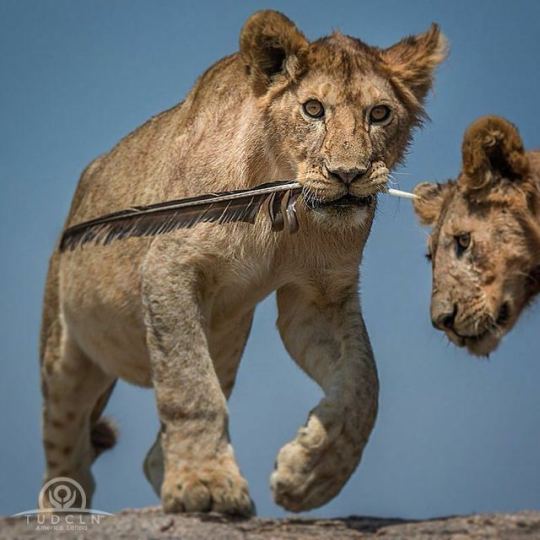
Comparte con tus amigos. #pietroluraschi #tanzania #serengeti #guidewild #privateguiding #wildlife #lion #nathab #wildlifeexperiences #namiriplains #TudclnLimited #lioncub #Bywilsonpc
#tudclnlimited#pietroluraschi#guidewild#wildlifeexperiences#bywilsonpc#lioncub#lion#wildlife#tanzania#nathab#privateguiding#serengeti#namiriplains
0 notes
Photo

From NatHab/WWF Wildlife Photo of the Day; July 22, 2018:
Family Affair
Lawrence Venus
Species: Burrowing Owl (Athene cunicularia) | Location: Yolo Bypass, California
A family of burrowing owls playing.
366 notes
·
View notes
Text
We know today that the aurora borealis, commonly called the “northern lights” occurs when electrically charged particles from the sun zoom into Earth’s atmosphere. The phenomenon is most commonly witnessed during fall and winter months at high-latitude locales, including Alaska and northern Canada. When you witness the lights streaking across the sky, reaching a height of up to 620 miles, surely you can understand how so many cultures came to develop mystical stories about them.
The aurora, with its striking colors and dance-like movements—seems otherworldly. The lights gave some communities feelings of comfort and happiness while others dreaded their re-appearance, considering them a bad omen.
Here are just 15 such tales:
1. When they witnessed the lights, many Inuit, the Arctic’s indigenous peoples, believed they were spirits of the dead playing a game with a walrus skull as the “ball.” The Inuit of Nunivak Island in the Bering Sea flipped its take on this story believing that it was walrus spirits playing with a human skull.
2. Indigenous Greenlanders believed that the lights were dancing spirits of children who had died at birth.
3. For Wisconsin’s Fox Indians, the aurora gave them a sense of foreboding—representing their slain enemies preparing for revenge.
4. In Alaska, some Inuit groups saw the lights as the spirits of the animals they had hunted, namely beluga whales, seals, salmon and deer.

The Inuit of Hudson Bay dreaded the lights, believing they were the lanterns of demons pursuing lost souls. © Brad Josephs/NHA
5. In Norse mythology, the lights were the spears, armor and helmets of the warrior women known as the Valkyries. They rode on horseback, leading fallen soldiers to their final resting place at Valhalla.
6. The Inuit of Hudson Bay dreaded the lights, believing they were the lanterns of demons pursuing lost souls.
7. In Finland, a mystical fox was thought to have created the aurora, its bushy tail spraying snow and throwing sparks into the sky.
8. Some Algonquin peoples believed their cultural hero, Nanahbozho, relocated to the far north after he finished creating the Earth. He lit large fires, which reflected back to his people in the form of the northern lights. This let them know he was thinking of them, even though they were far apart.

An inukshuk on Hudson Bay, Canada. Inukshuks are believed to have been used by native Arctic peoples for navigational purposes. © Brad Josephs/NHA
9. In perhaps the best oxymoron in British folklore, Scottish legend refers to the lights as “Merry Dancers” engaged in bloody battle.
10. Indians of the Great Plains of North America thought the light display came from northern tribes who were cooking their dead enemies in huge pots over blazing fires.
11. Inuit in Point Barrow, Alaska’s northernmost spot, believed the aurora was evil. They carried knives to protect themselves from it.
12. In Estonia, one legend said the lights appeared when whales were playing games. Another said they were sleighs taking guests to a spectacular wedding feast.

In Alaska, some Inuit groups saw the lights as the spirits of the animals they had hunted, namely beluga whales, seals, salmon and deer. © Eric Rock/NHA
13. Wisconsin’s Menominee Indians saw the lights as torches used by benevolent giants used when they speared fish at night.
14. Fishermen in northern Sweden took the lights as a good prophecy, believing they were reflecting large schools of herring in nearby seas.
15. If you whistled at the aurora, some Native Americans believed it would sweep down and take you away. Clapping your hands, however, caused the lights to retreat, keeping you safe. Meanwhile, in northern Scandinavia, the Sami people hid indoors during the light show.
Look for the Northern Lights and learn about Arctic cultures with WWF and NatHab.
By Marsea Nelson, WWF Guest Blogger
2 notes
·
View notes
Note
nathab suggests a show offhandedly and this time next year we’re all ass deep in king of the hill lore
-______- this sucks bc its true. youre all lucky im not working in the same box as him this year
2 notes
·
View notes
Text


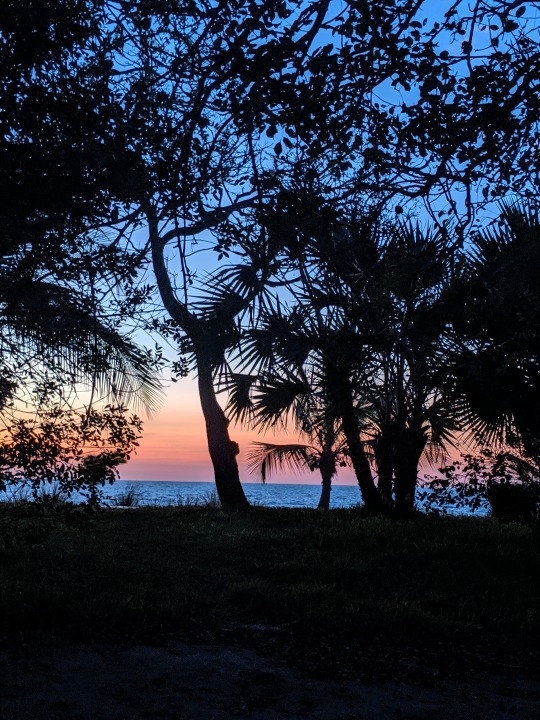



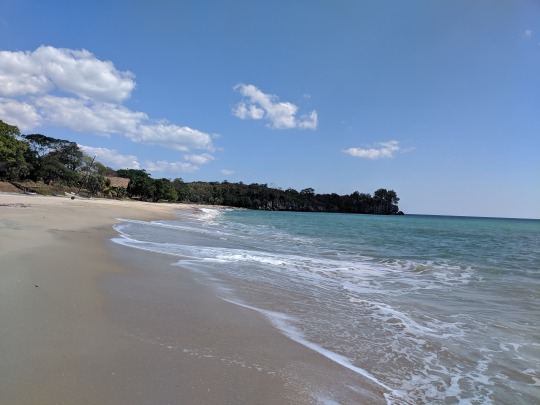
Madagascar - Day 7 - Anjajavy
Another early morning start. Arrived at the charter plane by 6:30. I am immediately annoyed. So. Many. White. People.
Now. I'm not immediately averse to white people. But they gotta prove themselves. Especially when traveling in a country not predominantly filled with other white people. Every single one of my fellow white travelers failed. They didn't thank anyone in the office (they did demand different coffee tho). They didn't even acknowledge the pilots (but they were happy to put their cameras into their personal space while on flight). No attempts at French and definitely no attempts at Malagasy.
I am the only solo traveler. There are two older couples and a family. We land in Anjajavy and are transported to the lodge via truck. The climate here is a drastic change from Masoala. Where in Masoala I was a constant prune, with varying levels of dampness, Anjajavy is a desert. It takes about a half hour to get to the lodge on the very bumpy dirt road. I catch glimpses of Sifakas and baobob trees on the way.
We arrive at the incredibly bougie lodge. It is so damn bougie they don't even operate on the Madagascar time zone. They put everything an hour ahead. This is dumb.
For the record: When NatHab sent me a proposed itinerary I questioned this stop. It did not seem like someplace I would pick on my own. I emailed the NatHab team: "But are we sure I won't get tired of Anjajavy for that long? I am also very concerned about what I call privileged white lady syndrome. I am very aware that not everyone can do this. And that I literally make in one week what many Malagasies make in not just one year, but many years. I just want to make sure I am doing this right."
They assured me that this was fine. That I would have plenty to do and it wasn't as bougie as it seemed. Well. It wasn't as bougie as it seemed. It was FAR bougier. And to have plenty to do? I'd have to shell out what is, so far, an untold amount of money to get the experience I want. Sigh.
When we arrived at the lodge it took everything in my being to not ask to be taken back to Tana.
That is not to say that this place isn't lovely. It is. It's fucking gorgeous. The staff is amazing. The facilities are 5 fucking star. But... 5 star isn't what I was looking for. I want to trek through rainforest and traverse tsingy. I want to spend 6 hours in search of a lemur and get gross and dirty while doing it. I want to come back and be so exhausted that I don't care that my cabin had a second floor (yes, it has a fucking loft. I refuse to go up there).
I got into my cabin and nearly had a panic attack throwing out all the superfluous flowers they had laying about. WASTING FLOWERS ISN'T FANCY, MKAY! I may have sat down and stress cried. I have 5 days here. 5 days of white person Madagascar.
I took my frustrations out on my laundry (they want to charge me €1 for every piece of underwear they launder. No.) I fill up the sink and scrub, scrub, scrub. Handwashing laundry is an overlooked life pleasure.
By the time I'm done washing and hanging my clothes I am calm enough to go back to the lodge and seek out a guide. They give us this paper to fill out with what we want to do, but... I don't want to do any of those things? And I definitely don't want to do them with the other assholes here. So I get a glass of water, pull a Lemurs of Madagascar book off the shelf, and wait for a guide to meet me.
Radu and I spend over an hour together. He gets it. I tell him about my experience in Masoala with Sarafen and how no other way will do. He lights up when I tell him about how many helmet vanga I saw in Masoala. He's a bird guy too.
We come up with a rough sketch and he says he will finalize and find me later.
I spend the afternoon sitting under some trees at the far end of the beach. Everyone else is at the pool.
Late late afternoon I go in search of a glass of Rosé. And shortly thereafter Radu comes up and gives me his proposed schedule. We start tomorrow. 7:30. Trekking for 5 hours.
At 5 I am told to enjoy tea time at the Oasis. This is actually fucking wonderful. I am the first guest to arrive. I get a glass of lime juice. And as I sit down, a brown lemur crashes through the trees. A few minutes later a Coquerel's Sifaka comes bounding through the garden. I snap all the photos.
I'm wandering around with my camera, the only one looking for birds. Radu comes up and takes me on a mini guided tour. I see the Madagascar Hoopoe; Madagascar Magpie Robin; the Grey-headed Lovebird; the Crested Drongo; some Paradise Flycatchers; amongst others. Maybe this place isn't so bad after all?
After spending two hours watching lemurs and birds I know it is time to head back, snap some sunset pics, and get ready for dinner.
I'm currently on my private deck. Listening to waves crash on the shore. I've opened up every window and shut off the AC. I'm a little wine drunk .
Going to try to stay up and watch the MAD v. TUN match for AFCON. Send me wakeful football vibes.
.
0 notes
Photo

50 #naleynum thanks nathab 😃 https://www.instagram.com/p/BykT5IwJw-FSmzaAAqfCdPrgATitn2PyDytoSQ0/?igshid=64hkog3oahzu
0 notes
Photo

We just can’t Bear this level of cuteness brought to you straight of @katmainps in Alaska by top notch #wildographer, explorer & @naturalhabitatadventures expedition leader @bradjosephsphotos ・・・ Is there anything better than spotting adorable bear cubs on an Alaska adventure? . Fancy a Great Alaskan Grizzly Encounter trip? You might want to oppose the proposed pebble mine planned for the region.#SaveBristolBay . #Wildography #wildlifephotography #alaskawildlife #alaskabears #brownbear #bearsofinstagram #brownbear #grizzlies #bristolbay #grizzlybears #alaskanwildlife #wildalaska #katmai #alaskabear #katmainationalpark #cute #nathab #naturalhabitatadventures https://www.instagram.com/p/B5r-9BXgdsJ/?igshid=g9wsv0oefsdw
#wildographer#savebristolbay#wildography#wildlifephotography#alaskawildlife#alaskabears#brownbear#bearsofinstagram#grizzlies#bristolbay#grizzlybears#alaskanwildlife#wildalaska#katmai#alaskabear#katmainationalpark#cute#nathab#naturalhabitatadventures
121 notes
·
View notes
Photo

@NathAbate: RT @HaroldSinnott: #5G will change EVERYTHING 💥 #smartcities #Driverless #AR #VR #UX #AI #IoT #drones #healthtech #robotics #automation #EmergingTechnologies #FutureOfWork #Sustainability MT @GlenGilmore cc @grattonboy @jblefevre60 @PBalakrishnaRao https://t.co/ohdZwvzpqc
0 notes
Photo
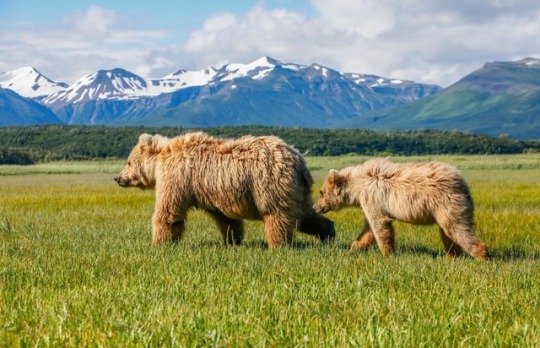
From NatHab/WWF Wildlife Photo of the Day; October 30, 2018:
Brown Bear Mother & Last Year's Cub
James Beedle
Species: Grizzly Bear (Ursus arctos horribilis) | Location: Katmai National Park, Alaska
This picture was taken at Hallo Bay in Katmai National Park. The brown bears are eating lots of grass while waiting for the salmon to return to the river. If you have not been to Hallo Bay you need to put it on your list. Make sure that you have a guide to keep you safe!
#wildlife photo of the day#nature#wildlife#bear#brown bear#Grizzly Bear#mountains#Hallo Bay#Katmai National Park#Alaska
60 notes
·
View notes
Text
What Happens When an Award-winning Designer Takes a Trip to Study the Polar Bears?
By Marta Ruliffson
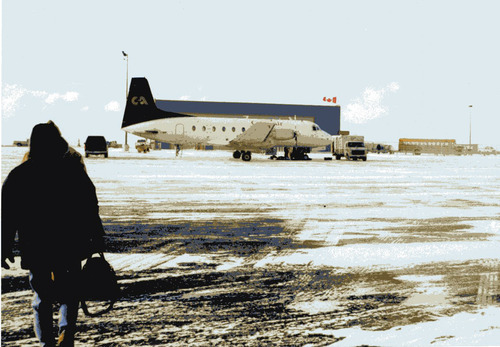
My first experience with Natural Habitat Adventures started out as pure happenstance, a very arbitrary decision. And ended up changing the course of my life.
I travelled to the arctic for the first time in late October of 2001 because I felt the cry of “And Now for Something Completely Different”. I had been a 1st responder during the 9/11 attacks and I lived and worked within the evacuation zone for many weeks after the incident, so I needed to get away. Really far away from buildings and cement and all things man-made. The Land of the Polar Bears seemed about as different from Lower Manhattan as one could get.
The arctic in Churchill was a sweepingly beautiful land that had not been affected, as yet, by the spoils of man. The night sky lit up with wavering undulating waves of green, blue and touches of red. The Aurora Borealis! The Northern Lights! Not like in the pictures (they appear flat), but dimensional, and all around you, engulfing you, like a warm comforting blanket.
The polar bears come to Churchill to await the formation of the sea ice. It is like watching a hockey team form. Although they often slept to conserve energy, they were also getting pretty impatient. I saw them play-wrestle (spar) with each other, or curiously walk right over to our tundra buggy, stand up on their hind legs, and poke their noses right in at the windows of our vehicle.When I returned to the US, everything felt different. I began to study everything I could about the Arctic beasts.
The following year, I booked another trip with NatHab to the arctic because I had to get back to the bears and all things arctic. I brought two colleagues with me the second time I took the NatHab Polar Bear tour, and arranged to stay on in Churchill on my own for nearly a week longer to continue my research. I took two more trips to Churchill, once in February of 2003 to deliver a huge set of my science textbooks to the Churchill Elementary School and the following year just to visit friends, photographers, science researchers and continue my own research. I learned everything I could about Polar Bears. I was always a science geek- and this was an obsession. You should see all the polar bear stuff that I accumulated during those years.
I'm a designer and science content developer by trade, and I've created a number of fun, accessible science books and magazines. Over this last decade I have worked to develop a truly engaging Polar Bear science book. Even though I had the polar bear knowledge, the artistic know-how, and the resources to create a really fun, comprehensive book, I could just never take the concepts further, because a print format just didn’t seem to present the engaging subject matter with the vision I had in mind. Earlier this year, I teamed up with Chuck Carter, who is a 3D illustrator for Nat Geo, Scientific American, NASA, and Hollywood. He worked on Myst years ago. He and I decided to bring this book to life as an interactive visual almanac, with animations, arcade games, and music. But behind the scenes is a whole lot of in-depth science. Newton, Pascal, Bernoulli, Tyson, Ian Sterling—you'll see how the science theories of all these guys relate to polar bears. First, you'll see simulations, animations, videos and even arcade games that explain these concepts. The viewer learns this material accidentally, in between all the fun and games. And, for the viewer who wants to take it farther, farther, the book provides pop-up factoid screens that take each topic into in-depth explanation and more science fun.
And it all started with one person on a simple tour with Natural Habitat Adventures!
This feature went live on Kickstarter a couple days ago, and scheduled to have the final product launched by next June. I'm grateful to NatHab for starting me on this 12-year adventure. It's been really exciting, and I still clearly remember when I stepped off the plane for the first time and my nose hairs froze and fell off! I recommend the trip to Churchill for anyone with a sense of adventure. And if you don’t like tundra boots, try Africa?
0 notes